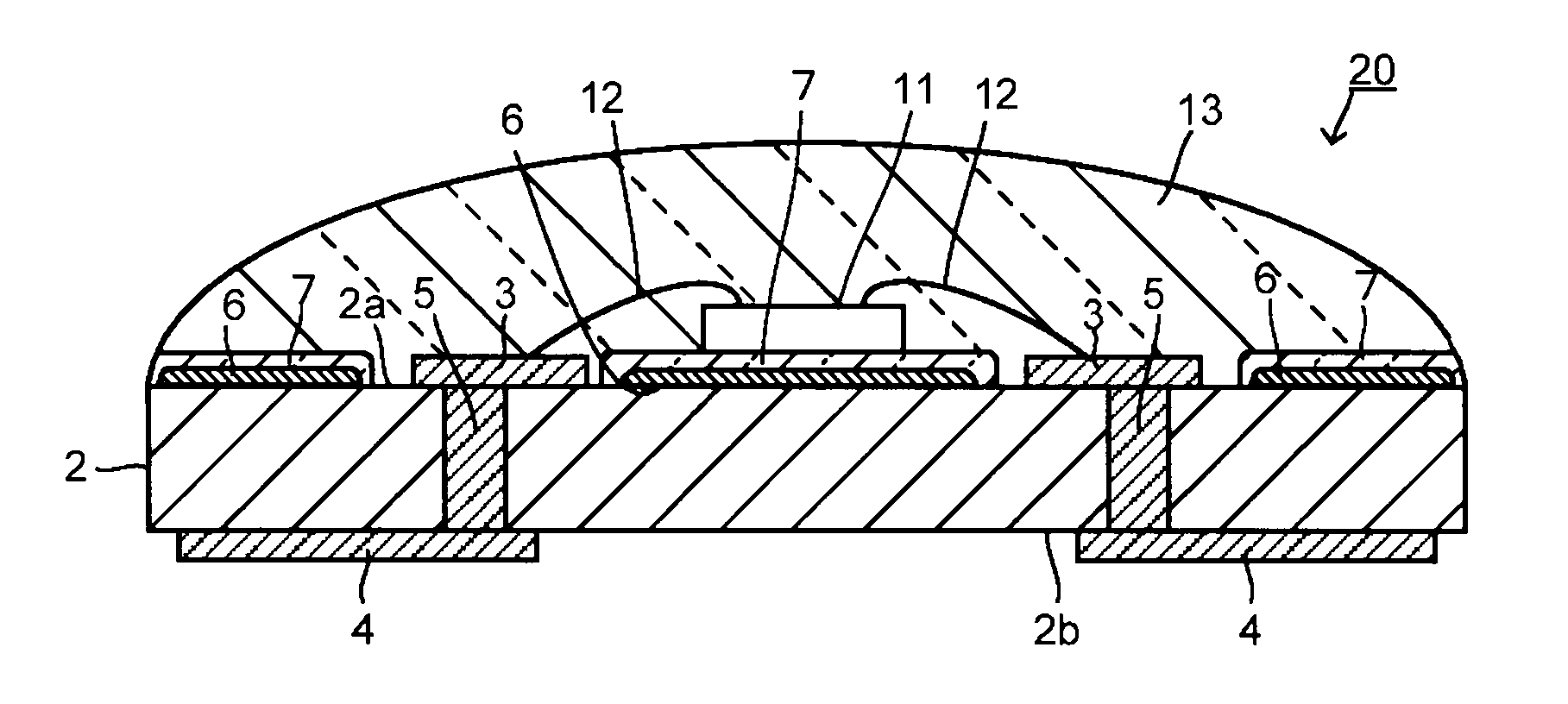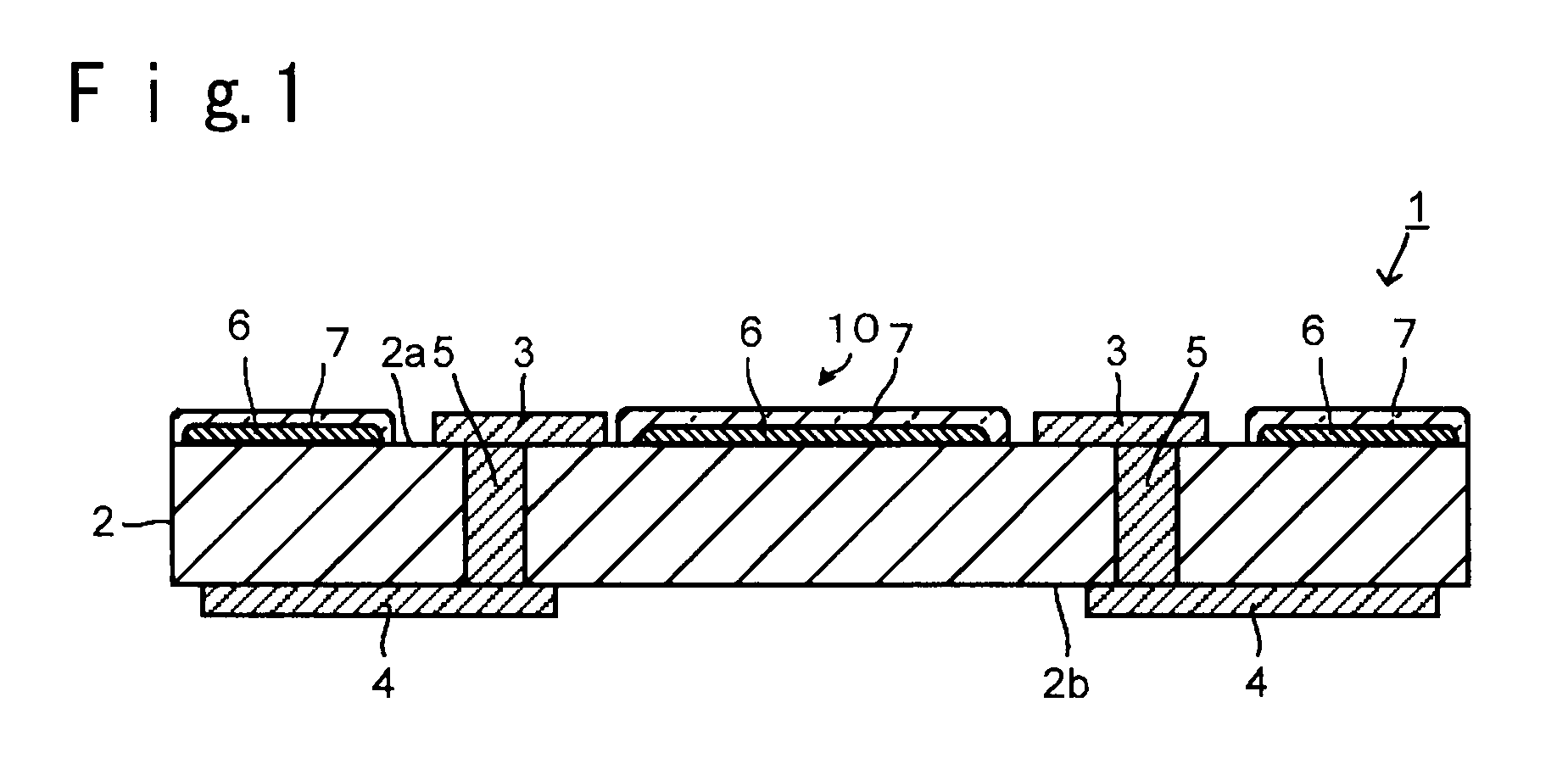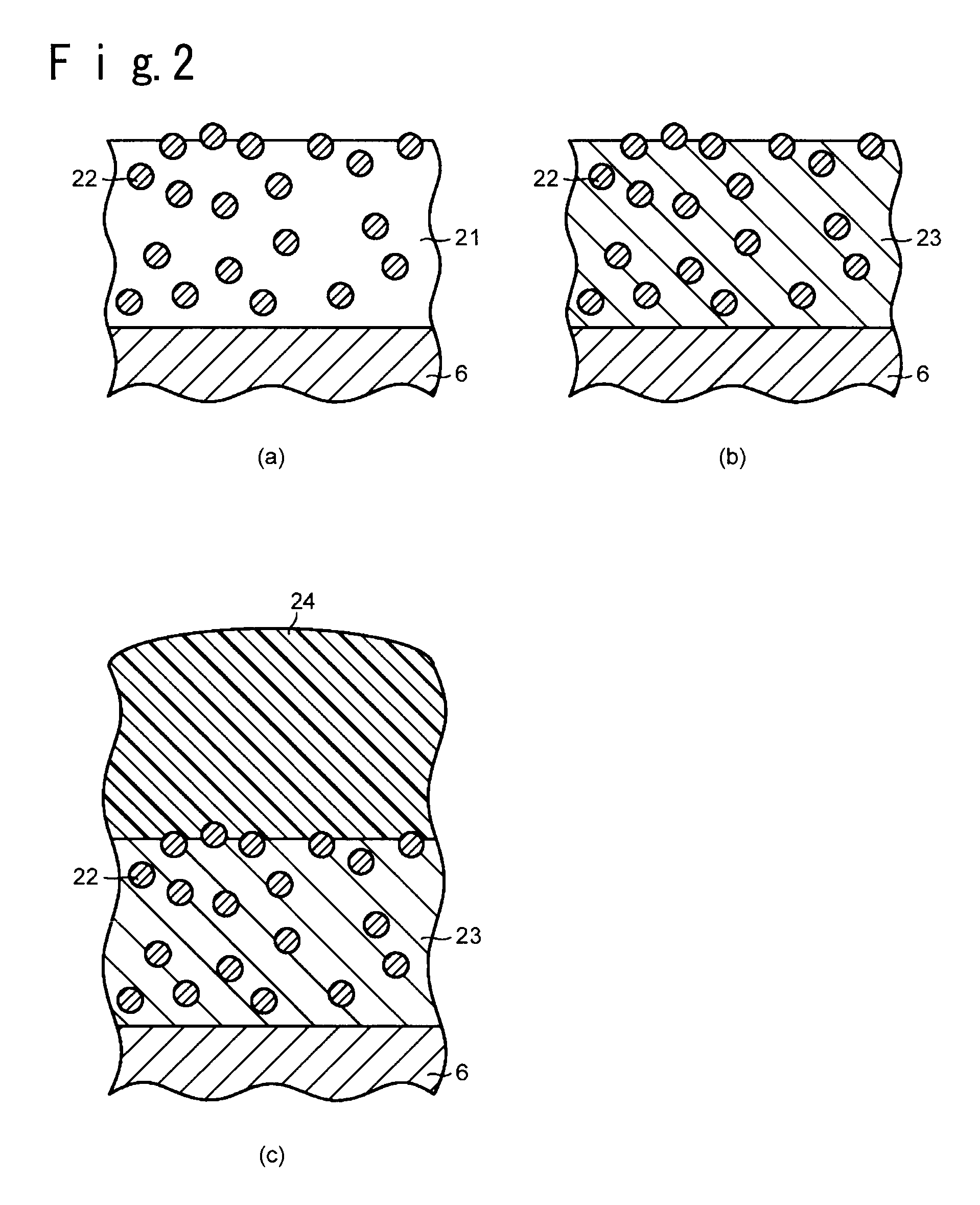Substrate for mounting light-emitting element, production process thereof and light-emitting device
a technology of light-emitting elements and substrates, which is applied in the direction of coatings, layered products, chemistry apparatuses and processes, etc., can solve the problems of insufficient prevention of reflectance deterioration, silver is likely to be corroded, and the reflectance (optical reflectance) tends to deteriorate, so as to prevent the cohesion of silver ions, prevent the deterioration of reflectance, and prevent the effect of silver coloring
- Summary
- Abstract
- Description
- Claims
- Application Information
AI Technical Summary
Benefits of technology
Problems solved by technology
Method used
Image
Examples
examples
[0080]Now, the present invention will be described in further detail with reference to Examples.
examples 1 to 12
Comparative Example
[0081]Firstly, a glass ceramics composition for the protective layer was prepared. That is, glass raw materials were blended and mixed so that the respective components of SiO2, B2O3, Al2O3, CaO, Na2O and K2O would be a composition (mol %) shown in Table 1, and this raw material mixture was put into a platinum crucible and melted at a temperature of from 1,500 to 1,600° C. for 60 minutes, and then this molten state glass was cast and cooled. A glass thus obtained was ground by a ball mill made of alumina for from 20 to 60 hours to obtain a glass powder. Here, ethyl alcohol was used as the solvent for grinding.
[0082]The average particles size D50 (μm) of the glass powder for a protective layer thus obtained was measured by a particle size distribution analyzer of a laser diffraction scattering method (tradename: SALD2100, manufactured by Shimadzu Corporation). The average particle size (D50) of the glass powder having each composition, was within a range of from 1 ...
PUM
| Property | Measurement | Unit |
|---|---|---|
| thickness | aaaaa | aaaaa |
| thickness | aaaaa | aaaaa |
| thickness | aaaaa | aaaaa |
Abstract
Description
Claims
Application Information
 Login to View More
Login to View More - R&D
- Intellectual Property
- Life Sciences
- Materials
- Tech Scout
- Unparalleled Data Quality
- Higher Quality Content
- 60% Fewer Hallucinations
Browse by: Latest US Patents, China's latest patents, Technical Efficacy Thesaurus, Application Domain, Technology Topic, Popular Technical Reports.
© 2025 PatSnap. All rights reserved.Legal|Privacy policy|Modern Slavery Act Transparency Statement|Sitemap|About US| Contact US: help@patsnap.com



